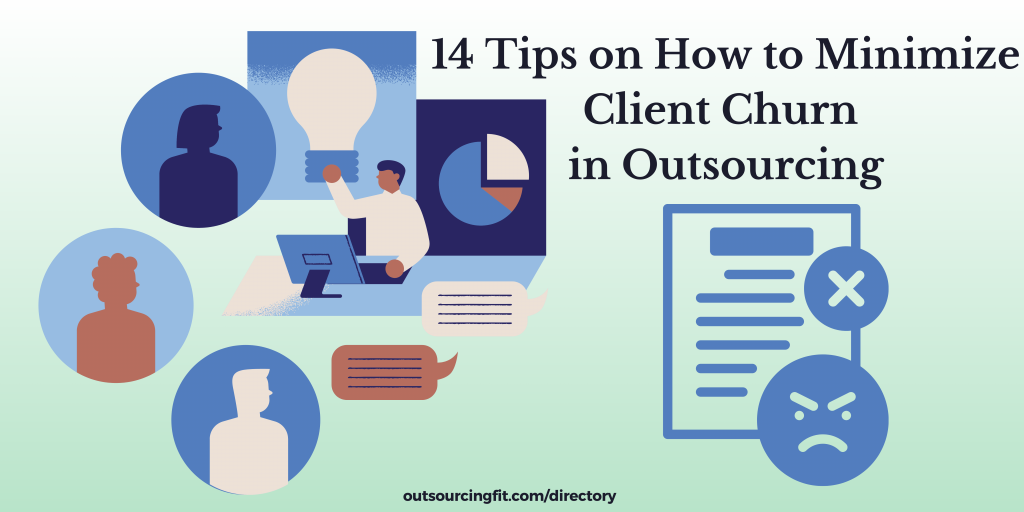Client churn, in any business, is inevitable. There are factors that we cannot control such as business downturn or company acquisitions. On the other hand, we can mitigate other factors such as client dissatisfaction and employee performance. It is important to identify the reasons for client dissatisfaction to know which aspects of the outsourcing business to improve upon.
Minimizing client churn in outsourcing is crucial for maintaining long-term, profitable relationships. Here are strategies to reduce client churn, along with online sources for further information:
1. Exceptional Service Delivery:
– Consistently deliver high-quality services that meet or exceed client expectations. Reliability is key to building trust.
– Maintain a service culture that prioritizes excellence.
– Use key performance indicators (KPIs) and service level agreements (SLAs) to ensure accountability.
2. Open Communication:
– Establish open and transparent lines of communication with clients.
– Encourage regular dialogue to understand their evolving needs, challenges, and feedback.
– Actively listen to client concerns and address them promptly.
3. Relationship Building:
– Invest time and effort in building strong relationships with client stakeholders.
– Understand their business goals, pain points, and long-term objectives.
– Develop a partnership mentality rather than a transactional approach.
4. Value-Based Pricing:
– Align pricing with the value your services provide to the client.
– Ensure clients perceive your services as a valuable investment.
– Consider performance-based or outcome-based pricing models to reinforce value.
5. Proactive Issue Resolution:
– Identify and address issues before they escalate.
– Establish robust issue escalation procedures.
– Implement preventive measures and continuous improvement based on lessons learned from past issues.
6. Service Innovation:
– Stay updated with industry trends and technological advancements.
– Offer innovative solutions and proactively suggest improvements that can benefit the client.
– Position your company as a thought leader and a source of expertise.
7. Feedback Mechanisms:
– Regularly collect feedback from clients through surveys, meetings, and reviews.
– Use feedback to make data-driven improvements to your services.
– Demonstrate responsiveness to client input.

8. Renegotiation Flexibility:
– Be open to renegotiating contracts when necessary to accommodate changing client needs.
– Show flexibility and willingness to adapt to evolving circumstances.
9. Service Diversification:
– Expand your service offerings to meet a broader range of client needs.
– Be a one-stop solution provider to reduce the client’s need to engage multiple vendors.
10. Client Education:
– Educate clients about the full range of services you offer and how they can benefit from them.
– Provide resources and insights that enhance their understanding of the industry.
11. Regular Performance Reviews:
– Conduct regular performance reviews that involve both sides, assess satisfaction, and discuss areas for improvement.
– Collaborate on performance improvement plans and objectives.
12. Long-Term Vision:
– Focus on long-term client relationships rather than short-term gains.
– Emphasize the strategic value of the partnership and the potential for mutual growth.
13. Client Loyalty Programs:
– Consider implementing loyalty programs that offer incentives or discounts to long-term clients.
– Reward and recognize client loyalty to encourage continued engagement.
14. Risk Mitigation:
– Develop risk management strategies to address potential disruptions or challenges.
– Be proactive in managing risks and maintaining business continuity.
By combining these strategies and adapting them to your specific industry and client base, you can significantly reduce client churn and foster long-term partnerships in the outsourcing business. Building trust, delivering value, and demonstrating commitment to your clients are key to client retention. And should there come a time when a client implements a different approach in their business or experiences slow cash flow, the business partnership may end, they may reconnect with you in the future if they require outsourcing services again.
